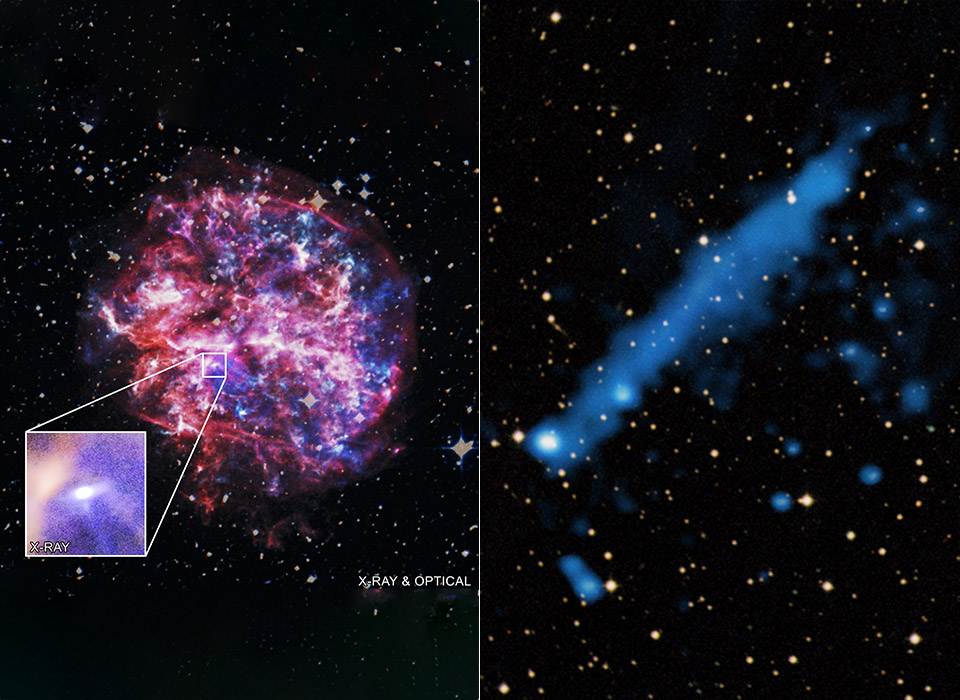
NASA’s Chandra X-ray Observatory captured a pulsar racing through the debris of an exploded star at 1.4-million mph. The researchers compared images of G292.0+1.8 from NASA’s Chandra X-ray Observatory taken in 2006 and 2016 to measure this. This speed is around 30% higher than a previous estimate of the pulsar’s speed that was based on an indirect method.
This newly determined speed of the pulsar indicates that G292.0+1.8 and its pulsar may be significantly younger than astronomers had previously once thought. The research team estimates that G292.0+1.8 would have exploded about 2,000 years ago as seen from Earth, rather than 3,000 years ago as previously calculated. Don’t confuse this pulsar, one that forms when massive stars run out of fuel, with the Hamilton Pulsar, t he world’s first digital wristwatch.
Sale
Celestron – AstroMaster 114EQ Newtonian Telescope – Reflector Telescope for Beginners – Fully-Coated Glass Optics – Adjustable-Height Tripod – Bonus Astronomy Software Package
- Powerful reflector telescope: The Celestron AstroMaster 114EQ Newtonian telescope is a powerful and user-friendly reflector telescope. It features fully-coated glass optics, a sturdy and lightweight frame, 2 eyepieces, a StarPointer red dot finderscope and an adjustable tripod.
- High-quality 114mm optics: The heart of the system is a fully-coated 114mm primary mirror. The AstroMaster mount features 2 slow-motion control knobs that allow you to make precision adjustments to view celestial and terrestrial objects.
- Quick setup & lightweight frame: This telescope for adults and kids to be used together features a lightweight frame and a manual German Equatorial mount for smooth and accurate pointing. Setup is quick and easy, with no tools required.
- Included accessories: We’ve included 2 eyepieces (20mm and 10mm), a tripod, and a StarPointer red dot finderscope. Accessories also include a free download of one of the top consumer rated astronomy software programs.

The energy imparted to the pulsar from this explosion was gigantic. Although only about 10 miles across, the pulsar’s mass is 500,000 times that of the Earth and it is traveling 20 times faster than Earth’s speed orbiting the Sun,” said the astronomers.

























































